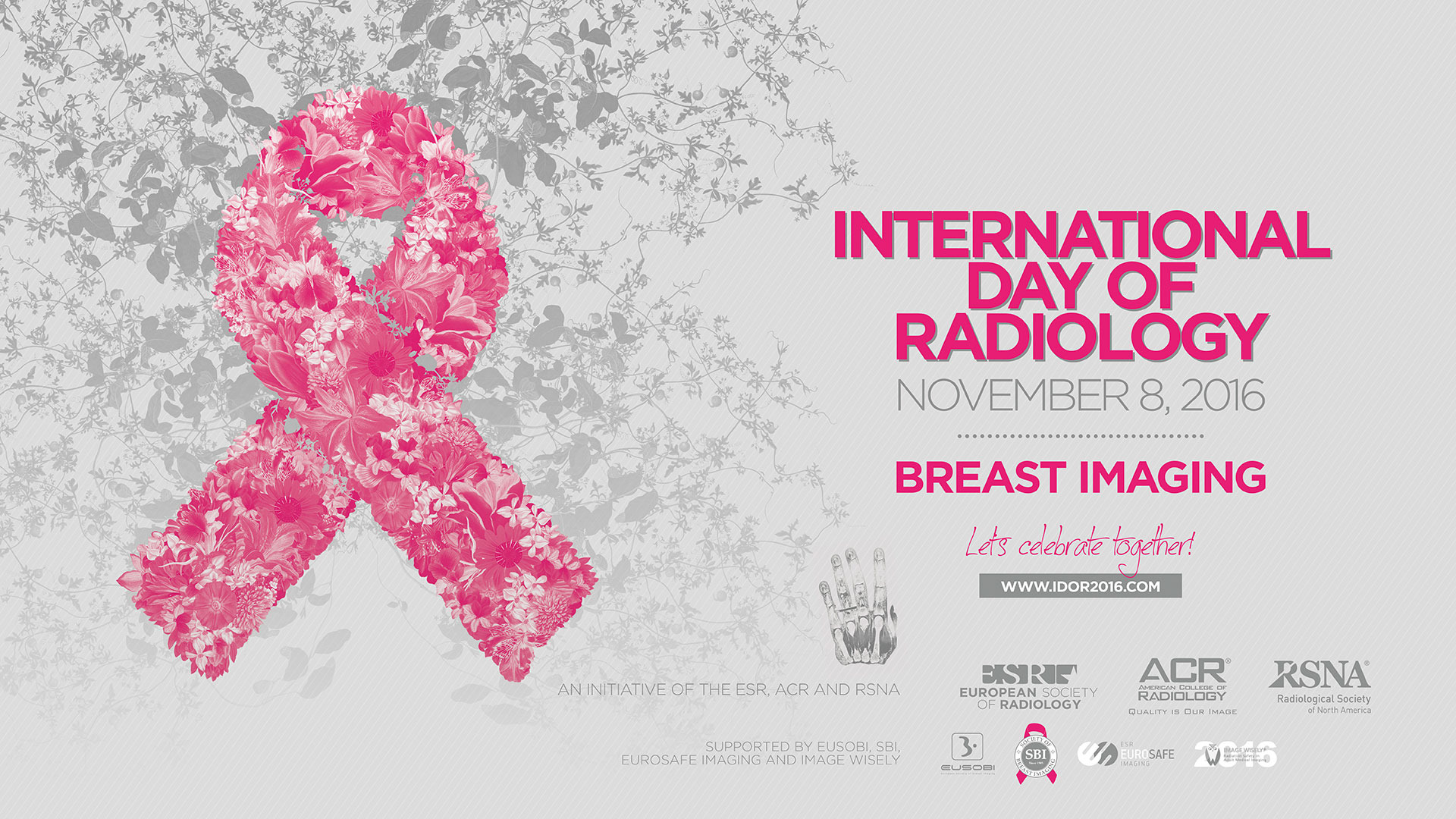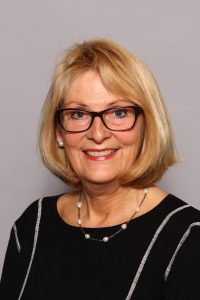Interview: Dr. Ilse Vejborg, head of radiology at the University Hospital of Copenhagen, Rigshospitalet, Denmark.

This year, the main theme of the International Day of Radiology is breast imaging. To get some insight into the field, we spoke to Dr. Ilse Vejborg, head of radiology at the University Hospital of Copenhagen, Rigshospitalet and head of the Capital Mammography Screening programme in Denmark.
European Society of Radiology: Breast imaging is widely known for its role in the detection of breast cancer. Could you please briefly outline the advantages and disadvantages of the various modalities used in this regard?
Ilse Vejborg: Mammography is a fast examination, showing the whole breast, if performed properly. Mammography has a high sensitivity to fatty tissue but the sensitivity can be compromised in dense breasts. Ultrasonography is an important supplementary examination which should be used in diagnostic examinations of women with palpable lumps or other symptoms in the breast. In experienced hands, ultrasound is the best examination for distinguishing a solid from cystic palpable lump but often also for evaluating whether the lump looks benign or malignant. Ultrasonography offers the possibility of evaluating the blood flow (Doppler) and stiffness (elastography) in a process and can be used to perform ultrasound-guided interventions.
MR Mammography has the highest sensitivity of all the imaging modalities but a more varying specificity; the latter is probably partly explained by the fact that in contrast to mammography screening, where high volume readers reading more than 5,000 examinations a year are mandatory, high volume readers of MR mammography are rarer.

Dr. Ilse Vejborg, head of radiology at the University Hospital of Copenhagen, Rigshospitalet and head of the Capital Mammography Screening programme in Denmark.
ESR: Early detection of breast cancer is the most important issue for reducing mortality, which is one reason for large-scale screening programmes. What kind of programmes are in place in your country and where do you see the advantages and possible disadvantages?
IV: In Denmark we have nationwide, organised, population-based mammography screening. Mammography screening is offered every second year free of charge in the target age group of women aged 50–69 years. Mammography screening is the only imaging modality proven to reduce breast cancer mortality. It is a fast and inexpensive examination which can be performed without the presence of the physicians. In Denmark, all screening centres have digital mammography equipment and RIS and PACS systems.
Nationwide mammography screening in Denmark was implemented rather late compared to our Nordic neighbours and Denmark has had a higher mortality of breast cancer than the other Nordic countries. Mammography screening started in Copenhagen municipality in 1991, in the county of Fyn in 1993 and in the municipality of Frederiksberg (close to Copenhagen) in 1994. These programmes offering screening only to around 20% of the target population were for many years the only screening programmes in Denmark. Not until 2010 did we have a nationwide roll out of mammography screening.
The major advantage of mammography screening is a reduction in breast cancer mortality. We have published the results of the Copenhagen screening programme, showing a reduction in breast cancer mortality of 25% in the target group and 37% in the participating group after ten years of screening. Before screening started in 1991, Copenhagen municipality had the highest breast cancer mortality in Denmark; after ten years of screening, the breast cancer mortality was the lowest in Denmark.
The major disadvantage of screening is the potential overdiagnosis of breast cancers that would not have been detected in the absence of screening. We have looked into the possible overdiagnosis in the two old screening programmes and have found an overdiagnosis on only 1–5%.
ESR: Do you know how many women take part (percentage) in screening programmes in Denmark? Do patients have to pay for this?
IV: In the latest report concerning the third national invitation round from our national database for quality assurance of mammography screening, we have documented an 84% participation rate of invited participants. Mammography screening is offered free of charge in Denmark.
ESR: The most common method for breast examination is mammography. When detecting a possible malignancy, which steps are taken next? Are other modalities used for confirmation?
IV: In Denmark we have national guidelines (Danish Breast Cancer Group, DBCG) recommending that in symptomatic breast patients, screening mammography is not sufficient. In all symptomatic patients, including women recalled for assessment from the screening programme, a ‘clinical mammography’ should be performed, including clinical examination (usually performed by the radiologist), mammography (including extra views, tomosynthesis or magnifications) and ultrasound examinations should be performed on all patients with a palpable lump or uncertain, suspicious or malignant findings on mammography. In women below 30–35 years (and men) mammography is second to ultrasonography. Ultrasound-guided or stereotactic guided biopsies should be performed in all women with palpable lumps or uncertain, suspicious or malignant findings. MR mammography is used for specified indications and is used secondary to the other two modalities, except for the indication of possible implant rupture and screening women with proven BRCA gene and other high risk gene mutations.
ESR: Diagnosing disease might be the best-known use of imaging, but how can imaging be employed in other stages of breast disease management?
IV: We are using mammography to monitor women previously operated upon for breast cancer. Non-palpable cancers are marked with a wire or a radioactive seed in an image-guided procedure before the operation. MR mammography is also used in evaluation of the treatment of women being treated with neoadjuvant chemotherapy.
ESR: What should patients keep in mind before undergoing an imaging exam? Do patients undergoing radiological exams generally experience any discomfort?
IV: Women undergoing a mammography usually do feel brief discomfort. It is important the women are informed of this before the examination. Women entering a screening programme should be informed of the possibilities of getting either a true or a false positive result – and also about the fact that not all cancer can be diagnosed on a screening mammogram and that they should contact their GP in case of symptoms from the breast even if they have recently been screened.
ESR: How do radiologists’ interpretations help in reaching a diagnosis? What kind of safeguards help to avoid mistakes in image interpretation and ensure consistency?
IV: The breast radiologist should be specially trained in breast imaging at one of our breast centres and should, according to our national guidelines, not be performing breast examinations independently before they have been trained. In screening mammography our guidelines recommend that at least one of the two radiologists performing the evaluations (blinded) should be a high volume reader reading more than 5,000 examinations a year.
ESR: When detecting a malignancy, how is the patient usually informed and by whom?
IV: The patient will usually be informed of the result of the breast imaging and clinical examination by the radiologist doing the examination. If a needle biopsy has been performed, the patient usually gets the result some days later at the department of breast surgery or oncology.
ESR: Some imaging technology, such as x-ray and CT, uses ionising radiation. How do the risks associated with radiation exposure compare with the benefits? How can patient safety be ensured when using these modalities?
IV: In mammography the radiation dose is so low that the benefit of early detection exceeds this by far.
ESR: How aware are patients of the risks of radiation exposure? How do you address the issue with them?
IV: The women undergoing mammography screening are informed via a link to a folder on the homepage of our National Board of Health. In the folder they can read about the benefits of screening as well as about false positive and false negative results and the possibility of overdiagnosis.
ESR: How much interaction do you usually have with your patients? Could this be improved and, if yes, how?
IV: The radiologists performing breast ultrasound have close interaction with the women and should be trained in communication with these patients.
ESR: How do you think breast imaging will evolve over the next decade and how will this change patient care? How involved are radiologists in these developments and what other physicians are involved in the process?
IV: In the future, breast density measurements might be of importance in guiding more personalised mammography screening. I believe that MR mammography will expand and that there might be a subgroup of women that will benefit from MR mammography screening, but only if we have specially trained high volume MR mammography readers. In Denmark we have a long (more than three decades) tradition of a closely integrated collaboration between all involved in breast cancer diagnosis and treatment. This collaboration is both local in the hospitals but also on a national level in the DBCG where all specialities involved in breast disease are represented.
Ilse Vejborg, MD is the head of the Department of Radiology at the University Hospital of Copenhagen, Denmark, Rigshospitalet and also the head of the Capital Mammography Screening programme. Ilse Vejborg has been Chair of the Danish Association for Radiological Breast diagnostic (DFRM); Chair of the national steering group for quality assurance of mammography screening (DKMS); a member of the DBCG’s executive committee, genetic committee, and editorial board; a member of the Healthcare Council for Endocrine and Breast Surgery; and a member of the European Society of Breast Imaging (EUSOBI). She has authored more than 77 peer-reviewed publications and is author of textbook chapters on breast imaging, national clinical guidelines on mammography screening, and national clinical guidelines on the diagnosis of breast cancer. She has been a main supervisor and co-supervisor on PhD projects concerning breast imaging and has been a lecturer, chairperson, president or organiser on numerous courses, symposia and congresses.
Read our interviews with expert breast radiologists from 25 different countries here.

